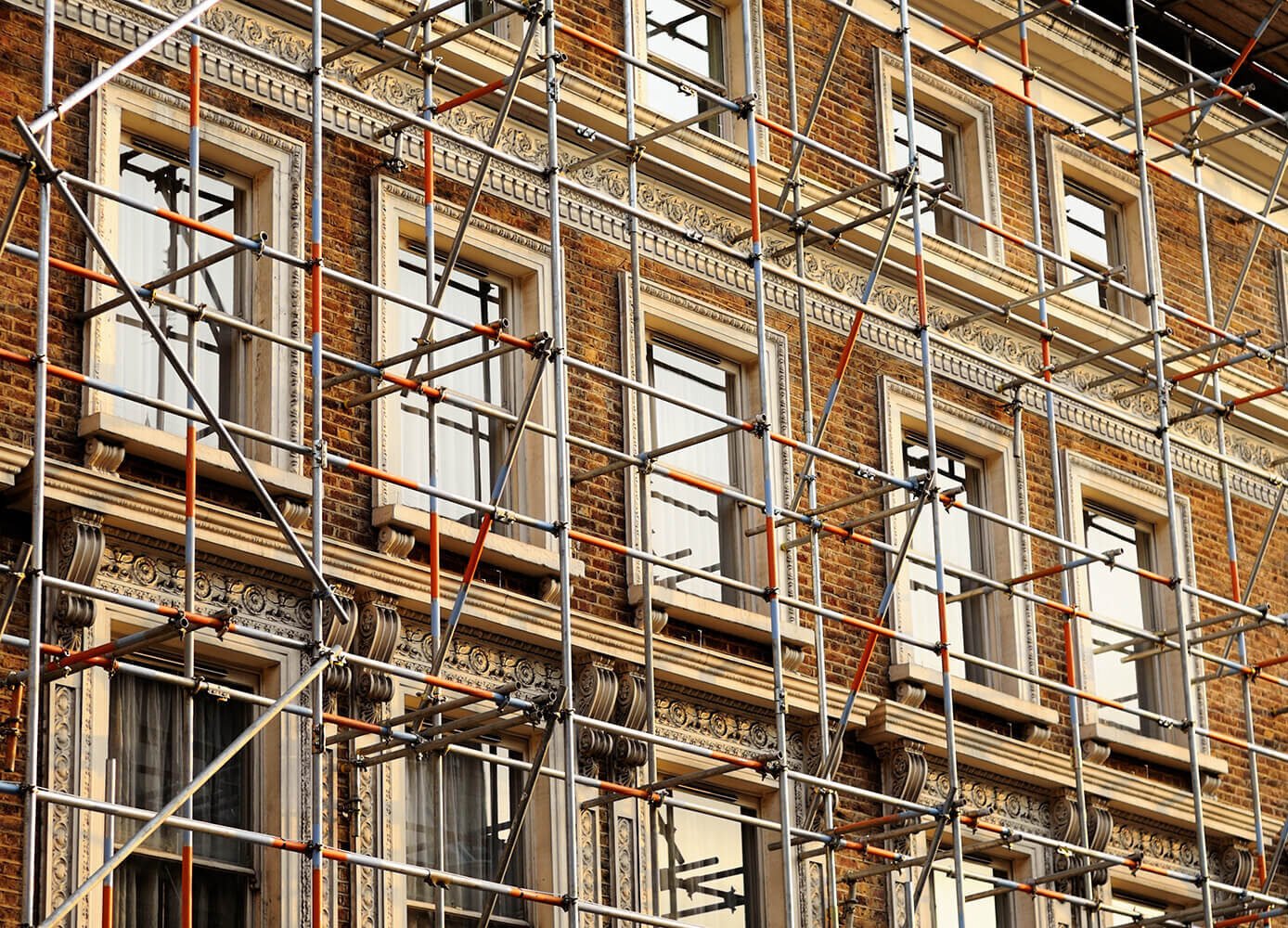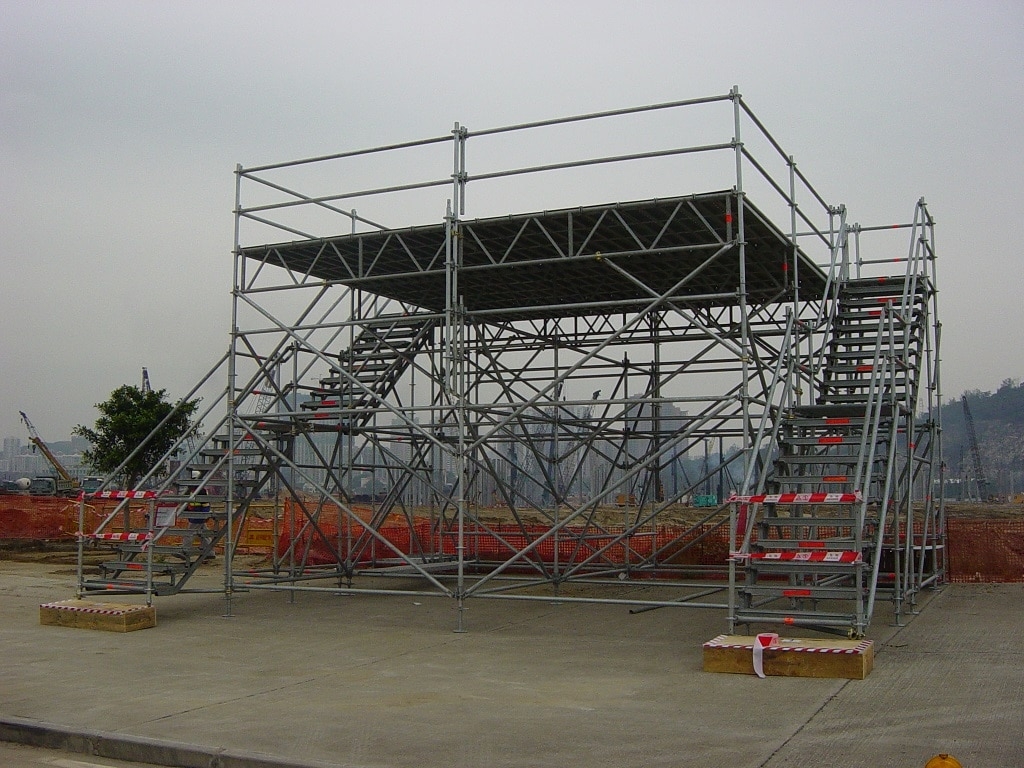Expert Scaffolder Surrey Offering Customized Solutions for Your Needs
Expert Scaffolder Surrey Offering Customized Solutions for Your Needs
Blog Article
Checking Out the Different Types of Scaffolding Utilized in Building Jobs
The building and construction industry depends heavily on different types of scaffolding to fulfill certain task requirements, each offering unique advantages and applications. Traditional structure scaffolding supplies a sturdy structure for general tasks, while put on hold scaffolding is necessary for work on skyscraper structures.

Typical Structure Scaffolding
Traditional frame scaffolding is one of the most widely utilized methods in the construction industry as a result of its effectiveness and versatility. This system includes upright and straight structures that are constructed to develop a secure system for materials and workers. The major parts consist of vertical messages, horizontal journals, and angled braces, which together provide a strong framework that can support significant tons.
Among the crucial advantages of traditional structure scaffolding is its versatility to numerous building and construction projects, varying from domestic structures to big business structures. The modular layout enables very easy assembly and disassembly, making it effective for both lasting and short-term jobs. In addition, the system can be customized in elevation and size, accommodating various building designs and website problems.
Safety is extremely important in scaffolding applications, and conventional structure systems are equipped with guardrails and toe boards to avoid drops and guarantee employee protection. Moreover, normal examinations and adherence to security regulations are vital in keeping the integrity of the scaffold. Overall, conventional framework scaffolding stays a basic selection in the building and construction industry, providing a reputable system for labor and boosting total task efficiency

Suspended Scaffolding
Suspended scaffolding supplies an one-of-a-kind option for construction tasks that call for access to raised surface areas, particularly in scenarios where typical framework scaffolding may be not practical. This sort of scaffolding is usually suspended from the roof covering or top degrees of a structure, utilizing a system of systems, sheaves, and ropes to develop a working room that can be changed to numerous heights.
Among the primary benefits of suspended scaffolding is its adaptability. It can be easily rearranged or lowered to fit adjustments in building demands, making it optimal for jobs such as window setup, façade job, and upkeep on skyscrapers. Additionally, the very little impact of suspended scaffolding permits far better use of ground area in city atmospheres, where room is frequently limited.
Security is a vital factor to consider in the usage of put on hold scaffolding. Overall, put on hold scaffolding supplies a efficient and effective option for accessing hard-to-reach locations in different construction situations, improving both efficiency and security on website.
System Scaffolding
System scaffolding, often considered as a contemporary option in the scaffolding market, includes pre-engineered components that can be quickly assembled and adjusted for numerous building jobs. Scaffolding. This sort of scaffolding is characterized by its modular layout, which permits for adaptability and effectiveness on job websites, suiting different heights and architectural demands
Generally made from high-strength steel or aluminum, system scaffolding uses improved toughness and security. The components consist of vertical posts, straight ledgers, and angled dental braces, which interconnect safely, guaranteeing a durable framework. The layout commonly incorporates standard fittings, streamlining assembly and disassembly processes, thereby minimizing labor time and costs.

Rolling Scaffolding
Rolling scaffolding is a versatile choice to traditional fixed scaffolding, designed for mobility and ease of usage on building and construction websites. This kind of scaffolding is composed of a platform supported by frames with wheels, permitting employees to conveniently move it as needed. The mobility feature significantly enhances performance, as it decreases downtime connected with setting up and taking apart fixed scaffolding.
Typically created from light-weight materials such as aluminum or steel, rolling scaffolding supplies a strong yet portable solution for jobs needing regular repositioning - Scaffolding. It is particularly advantageous in jobs such as paint, drywall installment, and electric job, where accessibility to different heights and locations is necessary
Safety and security is extremely important in rolling scaffolding style, with features such as securing wheels to avoid unintentional activity when being used, and guardrails to protect employees from falls. Additionally, many designs are flexible in height, accommodating various task requirements.
Cantilever Scaffolding

The design of cantilever scaffolding generally includes utilizing brackets or arms secured to a structure or structure, enabling the platform to expand exterior safely. Safety is extremely important; hence, these scaffolds need to be engineered to endure various loads and ecological conditions. Regular inspection and maintenance are essential to make sure structural stability and employee safety and security.
Cantilever scaffolding is favored for its adaptability and reliable use space, making it a preferred option in urban settings where space restraints prevail. It promotes simpler accessibility to high elevations, inevitably contributing to the total effectiveness of construction jobs. Similar to all scaffolding types, correct training and adherence to security criteria are important for workers using cantilever scaffolding.
Conclusion
Typical scaffolders yard structure scaffolding provides stability, while suspended scaffolding offers flexibility for elevated jobs. System scaffolding helps with quick assembly, and rolling scaffolding enhances movement for varying work environments.
Conventional framework scaffolding offers a durable foundation for general jobs, while put on hold Read More Here scaffolding is crucial for job on skyscraper frameworks.Moving scaffolding is a flexible option to standard set scaffolding, created for wheelchair and simplicity of usage on building websites. As with all scaffolding types, appropriate training and adherence to security requirements are critical for employees using cantilever scaffolding.
Standard framework scaffolding gives stability, while suspended scaffolding provides flexibility for raised tasks. System scaffolding facilitates fast setting up, and rolling scaffolding improves wheelchair for varying job atmospheres.
Report this page